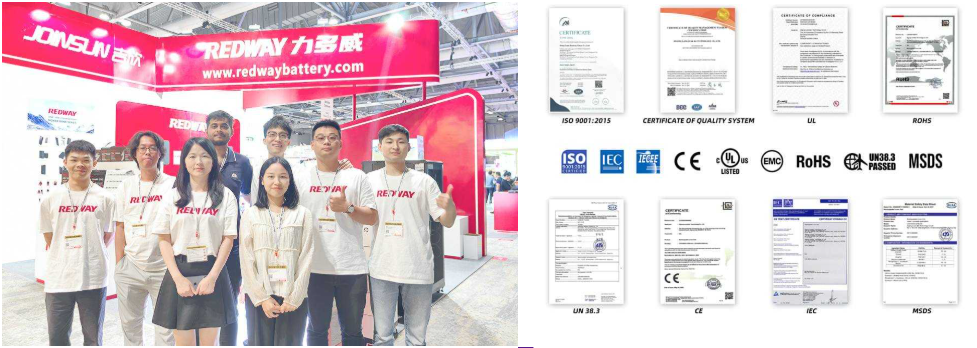The cycle life of typical LiFePO4 batteries used in RVs ranges from 2,000 to 5,000 cycles, depending on usage conditions and maintenance practices. This impressive lifespan significantly surpasses that of traditional lead-acid batteries, making them a preferred choice for RV owners seeking reliability and longevity.
What Is Cycle Life?
Cycle life refers to the number of complete charge and discharge cycles a battery can undergo before its capacity falls below a specified level, typically 80%. For lithium batteries, including LiFePO4, a higher cycle life indicates better longevity and performance, making it a crucial factor in battery selection and usage.
| Term | Definition |
|---|---|
| Charge Cycle | One complete discharge followed by a full recharge. |
| Rated Capacity | The maximum amount of energy a battery can store. |
| Degradation | The reduction in battery capacity over time due to cycling. |
How Long Do LiFePO4 Batteries Last?
LiFePO4 batteries typically last between 2,000 to 10,000 cycles, depending on usage and conditions. With proper care and maintenance, many high-quality LiFePO4 batteries can achieve over 5,000 cycles, translating to a lifespan of 5 to 15 years under optimal conditions.
Wholesale lithium golf cart batteries with 10-year life? Check here.
Chart: Lifespan Comparison
| Battery Type | Average Lifespan (Years) | Average Cycles |
|---|---|---|
| Lead-Acid | 3-5 | 300-500 |
| AGM | 5-7 | 500-1,000 |
| LiFePO4 | 10-15 | 2,000-5,000 |
What Affects LiFePO4 Cycle Life?
LiFePO4 cycle life is influenced by several factors, including depth of discharge (DoD), operating temperature, charging practices, and the quality of manufacturing. Frequent deep discharges or extreme temperatures can significantly reduce cycle life, while proper usage can enhance it.
Want OEM lithium forklift batteries at wholesale prices? Check here.
Chart: Factors Influencing Cycle Life
| Factor | Impact |
|---|---|
| Charge Rate | Faster charging can generate heat and reduce lifespan. |
| Depth of Discharge | Deeper discharges shorten cycle life; aim for less than 80% DoD. |
| Temperature | Extreme temperatures can accelerate degradation or reduce performance. |
How to Extend Battery Life?
Depth of discharge (DoD) is important because it directly impacts battery lifespan. A shallower DoD (e.g., 20% to 80%) can significantly increase cycle life, while deeper discharges can lead to faster degradation. Managing DoD helps optimize performance and longevity.
Chart: Best Practices for Extending Battery Life
| Practice | Description |
|---|---|
| Avoid Deep Discharges | Keep discharges above 20% SoC whenever possible. |
| Use Manufacturer’s Charger | Ensure compatibility with lithium technology. |
| Monitor Temperature | Maintain within recommended operating range. |
Why Is Depth of Discharge Important?
Depth of discharge (DoD) is important because it directly impacts battery lifespan. A shallower DoD (e.g., 20% to 80%) can significantly increase cycle life, while deeper discharges can lead to faster degradation. Managing DoD helps optimize performance and longevity.
What Are the Benefits of Using LiFePO4 Batteries in RVs?
LiFePO4 batteries offer several benefits for RV use, including longer lifespan (up to 10 years), lightweight design for better fuel efficiency, high energy density for extended power supply, and enhanced safety features that reduce risks associated with overheating or combustion.
How Do Charging Practices Impact Battery Longevity?
Charging practices greatly impact battery longevity; using a charger specifically designed for LiFePO4 batteries prevents overcharging. Regularly charging within the recommended voltage range and avoiding deep discharges contribute to maintaining optimal performance and extending overall battery life.
Chart: Charging Practices Impact
| Charging Method | Effect on Longevity |
|---|---|
| Slow Charging | Reduces heat; extends lifespan |
| Fast Charging | Generates heat; may shorten lifespan |
| Overcharging | Causes damage; significantly reduces cycles |
What Maintenance Practices Enhance Battery Performance?
To enhance battery performance, regularly check charge levels, clean terminals to prevent corrosion, ensure proper ventilation during charging, and monitor temperature conditions. Implementing these maintenance practices helps prevent issues and prolongs the lifespan of lithium batteries.
Expert Views
“Understanding cycle life is essential for maximizing your investment in LiFePO4 batteries,” says an expert from Redway. “By following best practices regarding depth of discharge and charging methods, users can significantly enhance their battery’s performance and longevity.”
Conclusion
The cycle life of typical LiFePO4 batteries used in RVs ranges from 2,000 to 5,000 cycles depending on various factors such as depth of discharge and charging practices. By understanding these elements and implementing proper maintenance routines, RV owners can enjoy reliable power solutions that last throughout their adventures.
FAQ Section
- What is the average cycle life of a LiFePO4 battery used in an RV?
The average cycle life ranges from 2,000 to 5,000 cycles depending on usage conditions and maintenance practices. - How can I extend the cycle life of my LiFePO4 battery?
You can extend its cycle life by avoiding deep discharges, using appropriate chargers designed for lithium technology, maintaining optimal temperature conditions, and conducting regular maintenance checks. - Why is depth of discharge important for my battery’s lifespan?
Maintaining a lower depth of discharge helps prolong your battery’s lifespan; deeper discharges can lead to quicker degradation over time.





